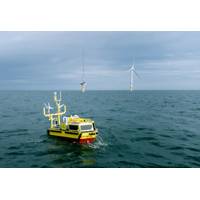
Venterra Rolls Out V-LiDAR Fleet for Offshore Wind Surveys
new Port of Blyth facility, the V-Lidar system combines precision data acquisition with enhanced health and safety standards, offering real-time wind resource data and increased operational reliability for offshore wind developers.The Venterra V-LiDAR fleet integrates advanced marine electronics, communication systems and sensor design to deliver high-frequency analytics and lower uncertainty wind resource data.With an operational window of up to 20 months, the buoys improve deployment efficiency, expand operational limits, and reduce health and safety risks.As the first dual LiDAR buoy system built in

Deeply Innovative: Drivers in Subsea Defense
of submarines and underwater vehicles, to the protection of subsea energy and communications infrastructure, maritime security now extends well beneath the ocean surface. As a result, defense agencies worldwide are investing heavily in underwater energy, navigation, sensing, autonomy, and communication systems to maintain domain awareness and respond to emerging threats. The companies featured in this year’s MTR100 are leaders in these areas, with innovations shaping a new era of persistent, distributed, and scalable subsea defense capabilities.Power & Energy Systems: Enabling PersistenceAs

Fincantieri Presents Underwater Segment, Revenue Expected to Reach 920 Million in 2027
added value.The underwater segment brings together under one management the Group’s capabilities in submarine design and construction, WASS Submarine Systems' technologies in effectors and acoustic sensors, IDS - Ingegneria dei Sistemi’s expertise in unmanned, radar, and advanced communication systems, and Remazel Engineering’s know-how in topside systems for the deployment, recovery, and operational interfacing of autonomous vehicles. The global market for the underwater sector is estimated at approximately USD$56 billion (50 billion euros) per year, with a component accessible
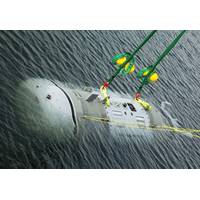
Navy Signals Need for New Large AUV Class
is a cutting-edge, autonomous, unmanned diesel-electric submarine with a modular payload section to execute a variety of missions critical to enhancing the Navy’s undersea prowess. Configured to accommodate various payloads, the Orca XLUUV allows for the seamless integration of sensors, communication systems, and other mission-specific components, adapting to the evolving requirements of naval operations. With its long-endurance capability, the Orca XLUUV can operate autonomously for extended periods. This allows for sustained operational presence and increased mission effectiveness in challenging
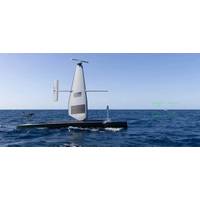
Saildrone USVs Support Mission to Secure US Southern Border
Voyager USVs are also deployed to the Caribbean Sea in support of Operation Southern Spear.The Saildrone Voyager is a 10-meter USV designed to support distributed maritime operations by monitoring critical areas, such as chokepoints, for illicit activity. Equipped with advanced sensors, radar and communication systems, Saildrone USVs can detect suspicious vessels, track their movements and relay near real-time intelligence into a common operating picture for action.Once a target is identified, Saildrone provides precise coordinates and other data, enabling the Coast Guard to interdict bad actors before
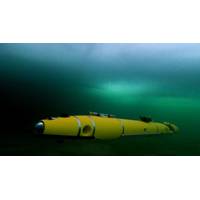
SeaMe Project to Leverage AUVs, AI to 'Stand Watch' in Offshore Wind Farms
;Enhancing System Capabilities for Offshore DeploymentAnother focus of DFKI's work is preparing the system specifically for offshore use. To achieve this, its capabilities are being expanded, and existing functions optimized to withstand demanding operating conditions. This includes improving communication systems, implementing enhanced safety measures such as emergency surfacing capabilities, and increasing overall system robustness.Navigation in the open ocean is particularly challenging as conditions vary and the AUV has to react to unforeseen events. To address this, the researchers are developing
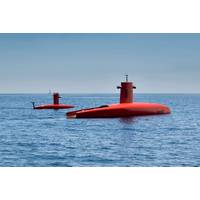
Exail Launches Its New DriX O-16 USV
for long-duration operations of up to 30 days. It benefits from an autonomy of 3,500 nm and can deploy multiple payloads and subsea assets. Its larger size allows for a wide range of payloads, including multibeam echosounders (MBES), sub-bottom profilers (SBP), and acoustic subsea positioning and communication systems (USBL). Additionally, the USV features a launch and recovery system to deploy remotely operated towed vehicles (ROTVs), inspection-class remotely operated vehicles (ROVs), and autonomous underwater vehicles (AUVs).According to Exail, the new transoceanic USV is particularly suited for full
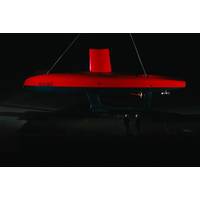
Exail Introduces New Transoceanic Uncrewed Surface Vessel
and subsea assets.The new USV leverages the successful track record of the already existing DriX USV launched back in 2017 which has accumulated over 150,000 hours of operations at sea in more than 19 countries. The new DriX O-16 benefits from a hybrid propulsion, redundant architecture, advanced communication systems, as well as AI powered obstacle detection and avoidance capabilities. It offers a high level of reliability and operational efficiency, and new multi-mission capabilities, for enhanced autonomous operations at sea.A versatile platform, Exail new transoceanic USV allows to launch and recover

Remote, Autonomous Ship Ops Drive Future of Marine Data Management
erroneous data are usually spotted and flagged up quite quickly. However, in the case of remote and autonomous ships, there is a greater need for automated, efficient, robust, and scalable data quality control.A requirement for seamless data transfer has led to the development of advanced communication systems and protocols in all fields of life, not just offshore. High-bandwidth connections and secure networks are essential to ensure the timely and accurate delivery of data. Additionally, data compression and optimisation techniques are employed to reduce the size of the transmitted data, optimising

 December 2025
December 2025





